
Inventive Uses of Water in Architecture
Being one of the most fundamental natural elements of our world, water has greatly impacted the aesthetics, formation and utility of buildings and structures. This natural element has been integrated throughout architecture in endlessly innovative ways, from indoor pools to soaring waterfalls. Water features come in various forms and serve diverse functions, from enhancing aesthetics to acting as hubs of activity or promoting sustainability. Continue reading to discover some of the inventive ways water is implemented into architectural projects, as well as its impact on the overall aesthetics of certain infrastructures.
Indoor and outdoor pools
When one first thinks of water usage in architecture, pools tend to be the number one aspect that comes to mind, which is also one of the common features of using water. Although a swimming pool is not an unusual sight, especially in residential homes in warm climates, architects have been pushing the boundaries of conventionality.
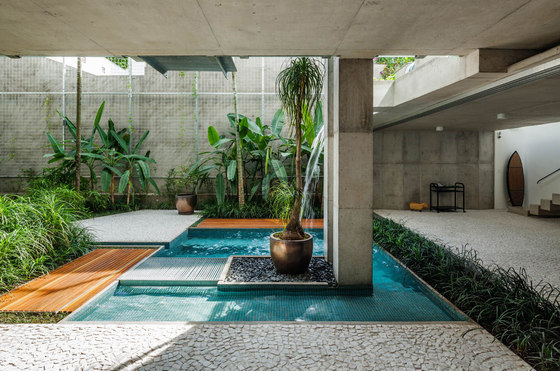
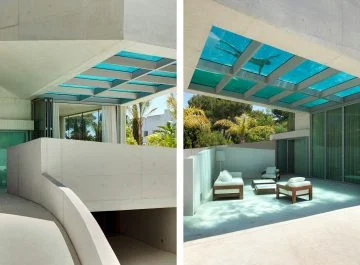
Take SPBR Arquitetos’ Weekend House in Downtown Sao Paulo as an example. It ingeniously raises its pool to maximise sunlight, preventing overshadowing by neighbouring homes. The ground floor features additional water pools, forming an enchanting indoor garden that embraces the main living space. Similarly, Wiel Arets Architects’ Jellyfish House showcases an elevated pool with an infinity edge, cantilevered from the main structure. With a glass bottom floor and panoramic window, the pool illuminates the house with sunlight and casts mesmerising blue reflections, challenging conventional sunken pool designs and fostering an unique interaction with light and nature.
Waterfalls
Waterfalls are another architecture wonder when it comes to the usage of water. Straying away from residential projects, waterfalls help elevate the space, offering a sense of tranquillity and grandeur depending on their scale. A specific example of a breath-taking waterfall is Singapore’s Jewel Changi Airport, designed by Safdie Architects, which is home to the world’s tallest indoor waterfall, supported by a series of smaller cascading waterfalls and terraced gardens.

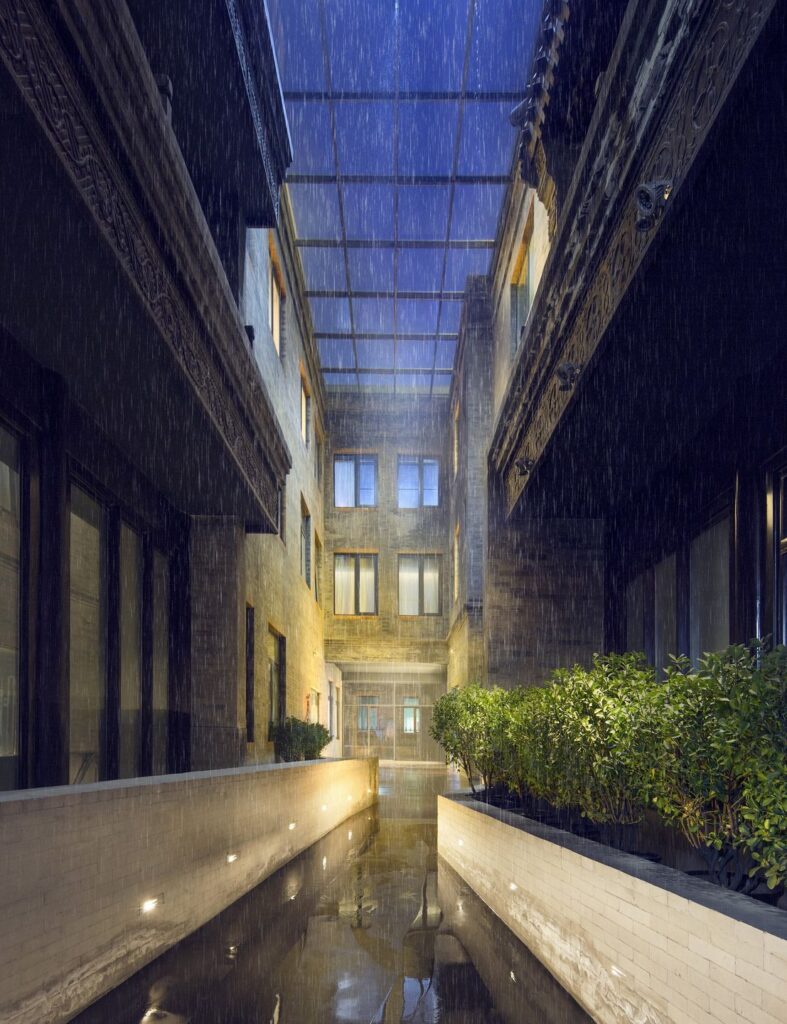
Likewise, asap’s Emperor Qianmen Hotel is seamlessly connected across its multiple levels through a network of interlinked water features. Beginning with a rooftop pool extending beyond the building’s edge, the water cascades in alternating patterns, flowing as waterfalls or gently raining down. It traverses interior channels, nourishing hanging plants with simulated rainfall, before culminating in an indoor waterfall that descends into an underground spa.
Eye-catching fountain displays
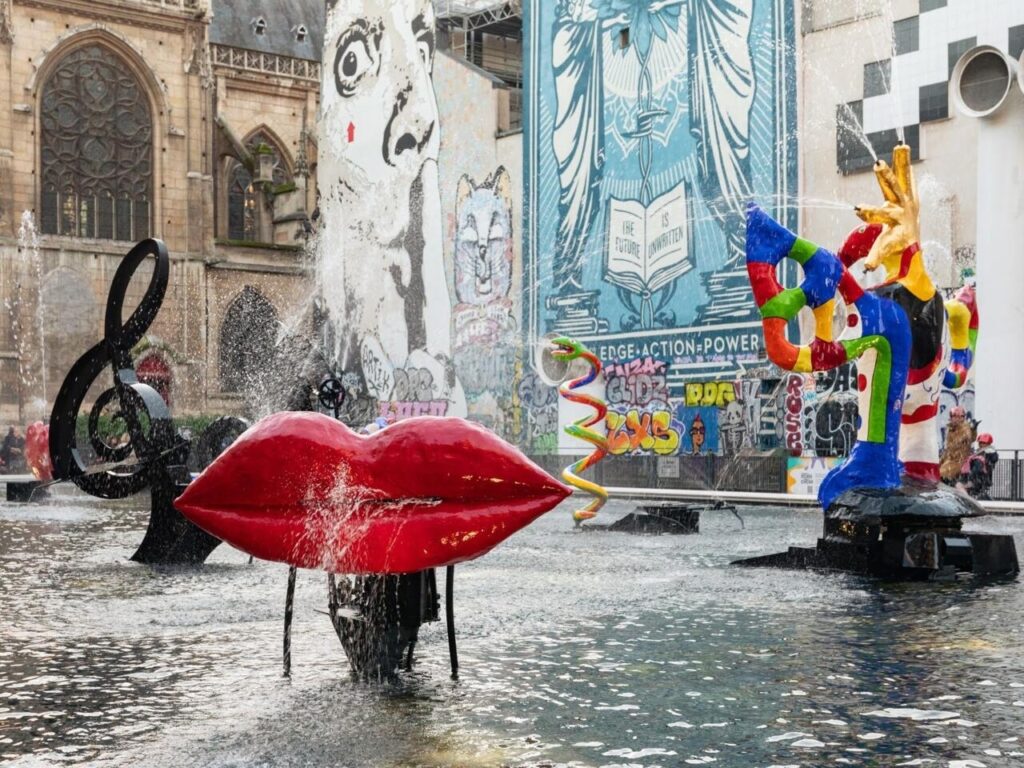
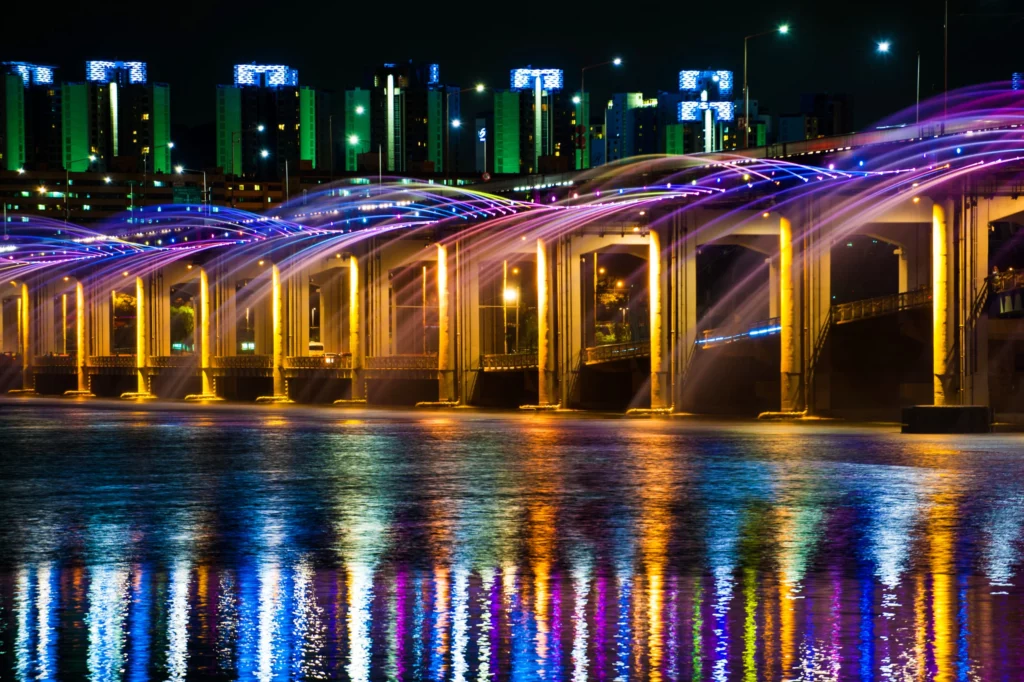
Fountains similar to waterfalls, can severely elevate a particular space through its extravagance and aesthetics. In contemporary times, public fountains fulfil various roles: they act as communal art installations, exemplified by the Stravinsky Fountain in Paris or the Crown Fountain in Chicago; furthermore, they showcase architectural ingenuity, such as the Moonlight Rainbow Fountain on the Banpo Bridge in South Korea or the Swarovski Fountain in Austria; and provide cherished spots for cooling off during hot summer days, like the Julia Penrose Fountain in Colorado.
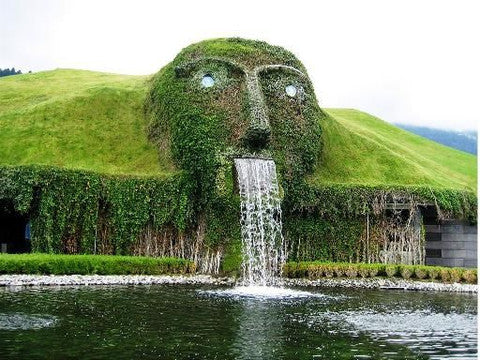
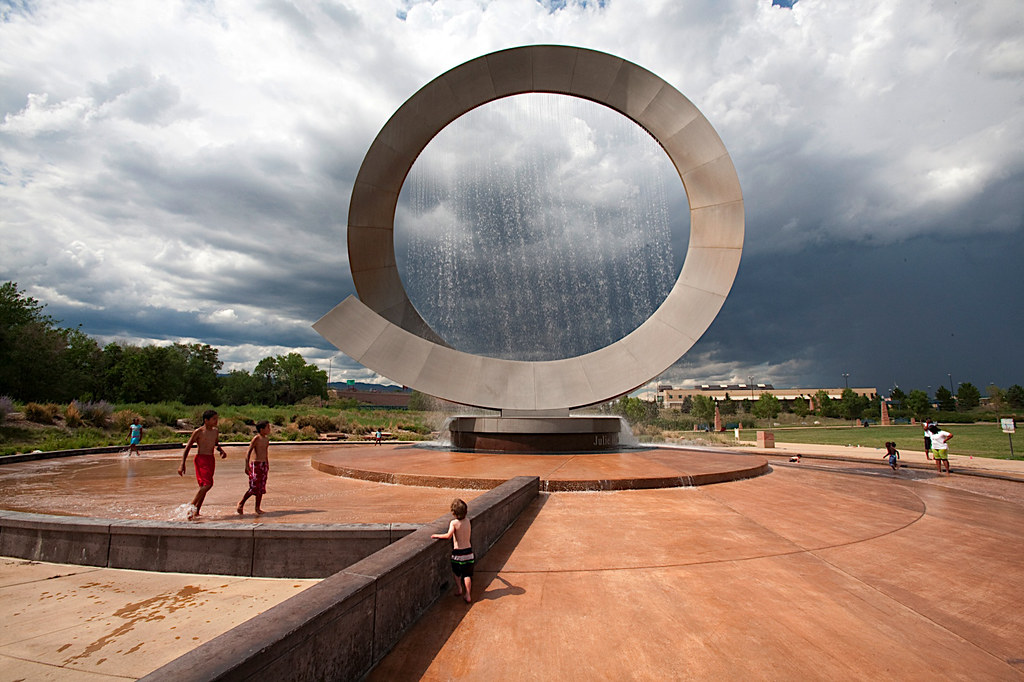
Some of the world’s most stunning fountains boast distinguished architectural lineages, including creations by artist and landscape architect Isamu Noguchi, as well as French designers Ronan and Erwan Bouroullec. In summary, watch out for fountains in your area that elevates the surroundings, and take a moment to appreciate their beauty.
In-between spaces
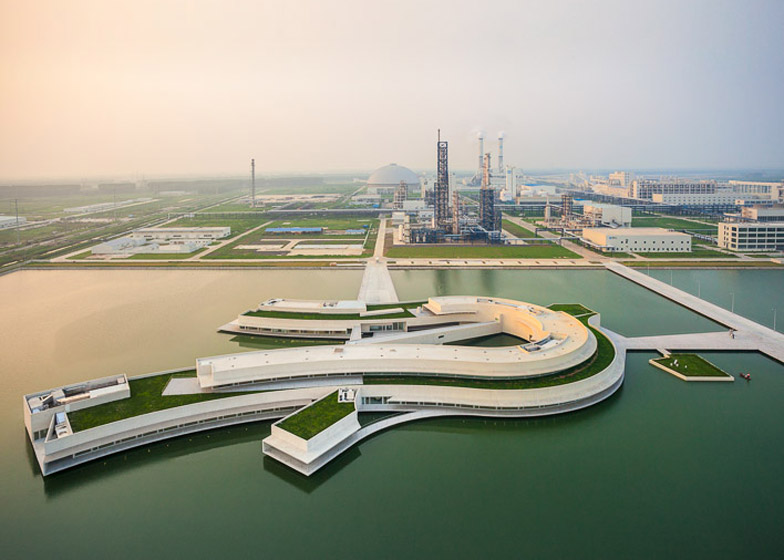
Some architectural structures integrate water creatively by building around, on or through pre-existing water features. Described by Canepa and Ghafar in an article, the in-between space can be known as a connection, transition and border, where the design of space is neither internal or external. An example of this usage is Alvaro Siza and Carlos Castanheira’s Building on the Water. This structure positions the offices of a large chemical plant atop the expansive artificial reservoir that serves the complex. Adopting a design characterised by white concrete and glass, which enhances luminosity and reflection, the structure’s curved shape echoes natural fluidity, departing from conventional orthogonal industrial architecture.
Utilisation of natural water bodies
Moving away from man-made water features, we will now be exploring some innovative ways in which architectural designs utilise still pools or fountains of water. Despite most of it being primarily for aesthetic purposes, there are architects who have integrated the water for its own functional use.

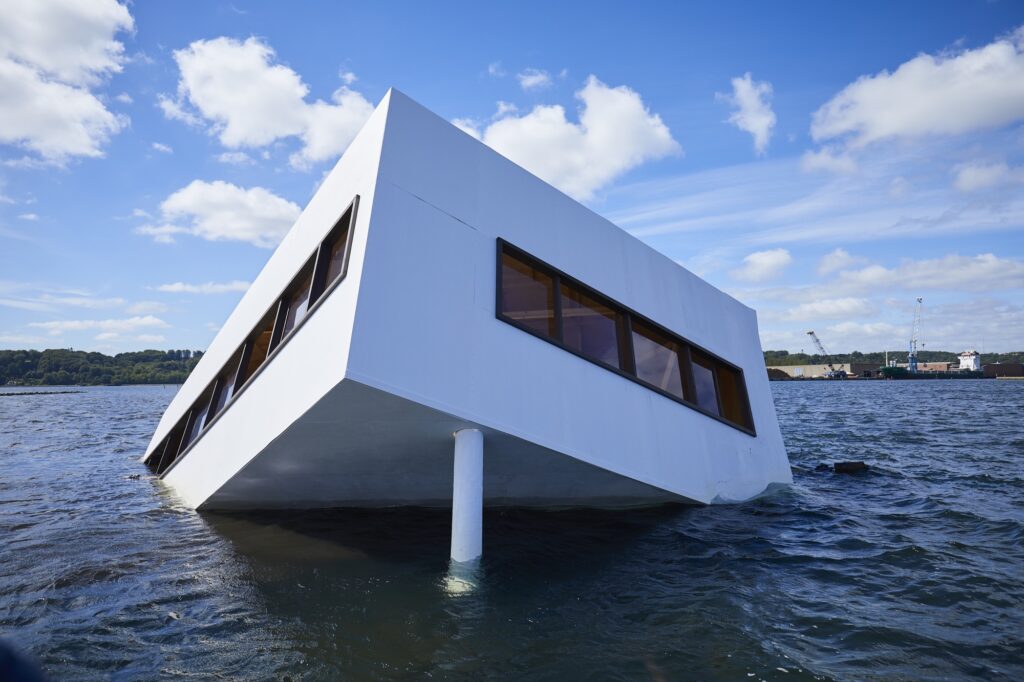
Water features, as seen in Jewel Changi Airport, can often serve a dual purpose by providing natural cooling. Brazil Arquitetura has notably pioneered a method of using water to improve the waterproofing of flat roofs, effectively preventing leakage, a challenge even faced by early modernist architectural icons like the Villa Savoye and Farnsworth House. Similarly, Collective Urbano’s Carpa Olivera utilises the sea tide to fill its pool, with walls designed just low enough to allow waves to spill over. This approach offers a sustainable and cost-effective solution for creating a public social space, with the pool complemented by a sculptural spiral slide and playful pop jet fountains.
Sources
- Canepa, Simona, and Norafida Ab Ghafar. “Water in Architecture, Architecture of Water.” Journal of Civil Engineering and Architecture, vol. 12, 2020, davidpublisher.com/Public/uploads/Contribute/5ecc68563c14d.pdf.
- Cao, Lilly. “Innovative Uses of Water in Architecture.” ArchDaily, 1 Jan. 2020, www.archdaily.com/931070/innovative-uses-of-water-in-architecture.
- “How Water Can Benefit Your Architecture and Design | Green Evolutions.” GreenEvolutions.com, 14 Dec. 2022, www.greenevolutions.com/the-innovative-uses-of-water-in-architecture-and-design/.
- Kehler, Glen. “7 Creative Uses of Water in Architecture.” Blog.landscapedrains.com, blog.landscapedrains.com/7-creative-uses-of-water-in-architecture#:~:text=Another%20way%20to%20use%20water.
- Nast, Condé. “The World’s 17 Most Beautiful Fountains.” Architectural Digest, 23 June 2020, www.architecturaldigest.com/gallery/most-beautifully-designed-public-fountains.
- Sedighi, Samaneh, and Ali Asghar Mollazehi. “Water in Architecture and Its Usage in Contemporary Houses Interior Design.” Journal of History Culture and Art Research, vol. 6, no. 4, Sept. 2017, https://doi.org/10.7596/taksad.v6i4.1138.




